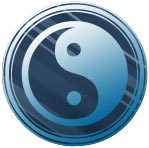
The Book of Changes
Chinese Book of Changes - I Ching, you are probably seeing it not for the first time. No question either you or your friends heard about this type of fortunetelling, and probably even learned one of the methods. In comparison with the European systems of fortunetelling we are used to Ye-Tseen is not card based. It is represented by 64 hexagrams, each of which reflects the situation connected with the past, future or present of the person.
It is difficult to answer who created the first text. The earliest record of this book dates back to 672 B.C.
Each hexagram (figure made of six symbols) has two threegrams (three-symbolled figures). Here are these threegrams.
The I-Ching trigrams distinguished as Yin and Yang by King Wan and Fu-Hsi
|
Yin arrangement
|
|
Yang arrangement
|
|
King Wan
|
Fu-Hsi
|
 Khwan  Sun  Li  Tui |
 Sun  Khan  Kan  Khwan |
|
|
|
King Wan
|
Fu-Hsi
|
 Khien  Kan  Khan  Kan |
 Kan  Li  Tui  Khien |
|
64 i-Ching hexagrams
To find your hexagram in the table you have to divide it into two parts in your head: upper and lower parts. Then the crossing of these figures will help you find the number of your hexagram in the table. After that all you have to do is read the meaning of the symbol you got by clicking on the number and think if it describes your situation well.
To find your hexagram in the table you have to divide it into two parts in your head: upper and lower parts. Then the crossing of these figures will help you find the number of your hexagram in the table. After that all you have to do is read the meaning of the symbol you got by clicking on the number and think if it describes your situation well.
|























 Divination |
Fortune Telling |
Spells |
I-Ching |
Tarot |
Runes |
Astrology |
Palmistry |
Cards |
FengShui |
Voodoo |
Dreams |
Numerology |
Amulet |
Myth
Divination |
Fortune Telling |
Spells |
I-Ching |
Tarot |
Runes |
Astrology |
Palmistry |
Cards |
FengShui |
Voodoo |
Dreams |
Numerology |
Amulet |
Myth